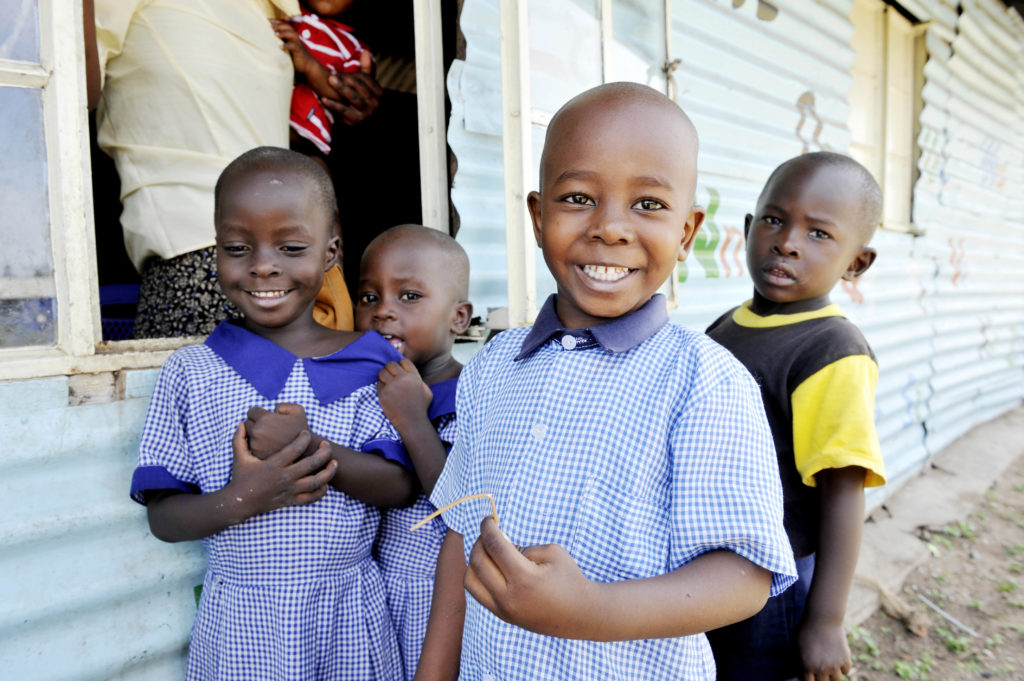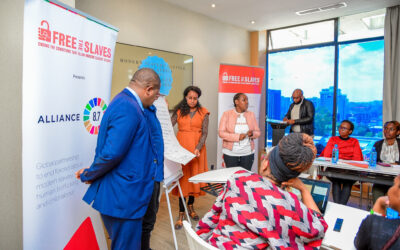Saturday, June 12 is the U.N. World Day Against Child Labor, and this year takes on special importaance because 2021 is the International Year for the Elimination of Child Labor. Organizations around the globe, including Free the Slaves, have pledged to create special activities to ensure children go to school, not to work.
Alarmingly, for the first time in two decades, child labor has increased globally. The International Labor Organization (ILO) and UNICEF jointly released a report this week revealing that more than 160 million children worldwide are subjected to child labor, with millions more increasingly at risk. This is an increase of over 8.4 million children in the last four years alone. Approximately 112 million children work in agriculture, contributing to the increased prevalence of child labor in rural areas. While young boys are traditionally more engaged in child labor, the increase of girls engaged in domestic work has narrowed the gender gap.
The report additionally sheds light onto the devastating effects COVID-19 has had on children throughout the world and the many ways in which COVID has altered their lives. COVID-19 has taken children out of classrooms due to lockdowns, put livelihoods at risk, and devastated local economies. According to the report, 9 to 46 million additional children could become susceptible to child labor before the end of the pandemic depending on the accessibility of aid and social protection programs. Regions of the world that were seeing great progress in tackling child labor prior to 2016 (the last year this data was tracked) have backtracked, largely due to circumstances created and exacerbated by the pandemic.
Child labor constricts children’s educational opportunities, puts them at physical risk, and exacerbates cycles of poverty. Its devastating effects are not only felt by the children who are exploited, but by entire societies. Child labor inhibits adults from finding decent work with living wages, perpetuates harmful gender norms, and stunts community prosperity everywhere.

2011-03-30, little children in uniform attending the J.N Kambarage Academy primary School in Suba (Kenya). Credit photo : Marcel Crozet / ILO
The International Year for the Elimination of Child Labor could not have come at a better time. While the figures in the recent ILO/UNICEF report are daunting, 2021 has thrust child labor into the international spotlight. One of the most prominent voices for action this year is the Alliance 8.7, the global partnership established to achieve SDG 8.7 by eradicating forced labor, modern slavery, human trafficking, and child labor by 2030.
This year, the Alliance 8.7 has established a global initiative to engage multiple levels of stakeholders in the fight against child labor. The initiative, spearheaded by Alliance 8.7-partner the ILO, calls upon governments, policy makers, civil society organizations, companies, and individuals to submit public Action Pledges. These Action Pledges aim to not only raise awareness about child labor, but also allow stakeholders and individuals to commit to tangible change, ramping up their efforts to combat child labor in their own communities.
As an active member of Alliance 8.7, Free the Slaves participated in the call for 2021 Action Pledges. FTS pledges to use 2021 to take our depth of experience with child labor in Haiti and apply it to our programming in other regions, beginning with East Africa. We will raise awareness of the harm limiting or denying education for domestic work has on children and their communities. We will work with our partners to build their core competencies and ensure they and the public can more easily identify and address cases and causes of child labor. We will subsequently scale up this initiative by prioritizing child labor in other regions in which we work, such as West Africa, MENA, Latin America, and South and Southeast Asia with the goal to eradicate child labor by 2025.
Ending child labor is not a task that FTS can do on our own. Please visit the International Year for the Elimination of Child Labor’s website to learn about additional efforts to tackle this issue and contribute your own Action Pledge. Together, we can eliminate child labor by 2025!
Brittany Hamzy is the Free the Slaves Policy and Advocacy Officer



